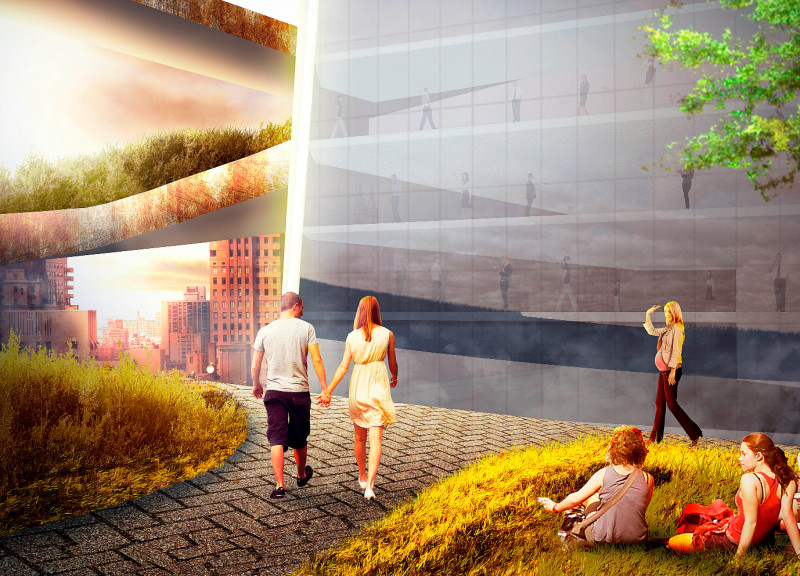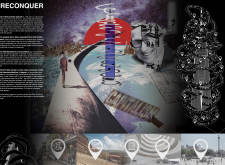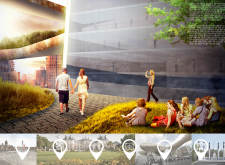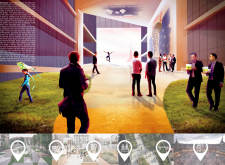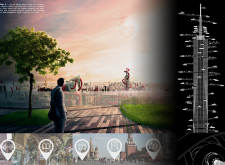5 key facts about this project
The design proposal for One World Trade Center focuses on creating a venue that encourages public interaction and community togetherness. Located in Manhattan, an area characterized by its rich cultural diversity, the project responds to the growing need for accessible public spaces in an urban environment that has increasingly become privatized. The concept revolves around democratizing various types of spaces, reshaping the OWTC into a hub for shared activities and communal ownership.
Design Concept
The proposal highlights the importance of rethinking how different types of spaces interact, including those that are domestic, community-based, and public. By enhancing these relationships, the design aims to foster a sense of belonging among residents and visitors. Integrating public and private areas is crucial, as it helps create an atmosphere that promotes connection and shared experiences.
Structural Elements
A large steel enclosure and a succession of slabs form the backbone of the building. These elements contribute not only to the stability of the structure but also facilitate the intended public functions. The steel frame lends strength to the design while allowing flexibility in accommodating various activities. This structural approach supports an array of public programs that create interaction between private and communal areas, encouraging dialogue among users.
Public Spaces
A notable feature of the design is the "ascending public ramp," which invites movement upward through the building. This ramp encourages users to explore the different levels, fostering engagement as they traverse the space. The design also includes outdoor elements such as squares, gardens, fields, and artificial lakes. These natural components address the demand for green spaces in the urban setting, providing areas for relaxation and leisure amid the bustle of city life.
Community Integration
This interpretation of One World Trade Center emphasizes the multicultural aspects of Manhattan, allowing for a variety of activities and interactions. By focusing on public spaces, the design encourages individuals to take ownership of their environment. Integrating natural areas and outdoor amenities enhances the building's overall livability, culminating in a layout that promotes social engagement and community bonds.
The project seeks to redefine One World Trade Center by shifting its role from a commercial landmark to a community gathering space, where public life thrives and barriers between different areas of interaction begin to dissolve.


